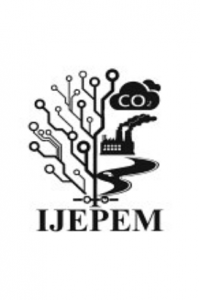ANALYSIS OF DIFFERENT REALLOCATION RESULTS IN LAND CONSOLIDATION PROJECT
ANALYSIS OF DIFFERENT REALLOCATION RESULTS IN LAND CONSOLIDATION PROJECT
The most important, complex and time-consuming process of land consolidation is known as the reallocation phase. Reallocation processes in land consolidation projects in Turkey is made according to farmer preferences (interview). Besides, the optimization studies based on the mathematical models for the reallocation process in many scientific researches in addition to reallocation model based on interview have been conducted. But, because there isn’t a precise mathematical model for the reallocation process, many different solutions have been suggested.
In this study, importance of reallocation in land consolidation and interview-based and block priority-based reallocation models has been described. Also, the results of the block priority-based reallocation model that makes land reallocation by being take into account respectively the largest parcels belong to the farmers have been obtained. The results which are obtained from the block priority-based reallocation model has been compared with the results which are obtained from the interview-based reallocation model. In the consolidation area of the Bogazici neighbourhood (Kocarlı-Aydin-Turkey), previously the number of cadastral parcels were 74. The number of this parcels according to the block priority-based reallocation model that is applied in this study have decreased to 50. Average parcel size was 1.25 hectares before consolidation in this region. Average parcel size has increased to 1.44 hectares according to the interview-based reallocation model and to 1.72 hectares according to the block priority-based reallocation model.
Keywords:
Land consolidation, reallocation the interview-based reallocation, the block priority-based reallocation,
___
- [1] Crecente, R., Alvarez, C. and Fra, U., 2002. Economic, Social and Environmental Impact Of Land Consolidation in Galicia. Land Use Policy, 19, 135–147.
- [2] Çay, T., İşcan, F. and Ayten, T., 2009, Arazi Toplulaştırması Projelerinde Mülakat ve Blok Öncelik Esaslı Dağıtım Modellerinin Karşılaştırılması, 4. Ulusal Mühendislik Ölçmeleri Sempozyumu, Trabzon-Turkey, 418-427.
- [3] Demetriou, D., Stilwell, J. and See, L., 2012, Land Consolidation in Cyprus: Why is an Integrated Planning an Decision Support System Required ? Land Use Policy, 29, 131-142.
- [4] Gonzalez, X.P., Alvarez, C.J. and Crecente, R., 2004, Evaluation of Land Reallocations With Joint Regard to Plot Size and Shape. Agricultural Systems 82, 31–43.
- [5] İnceyol, Y., 2014, Arazi Düzenleme Çalışmalarında Genetik Algoritma Uygulaması, PhD Thesis, Selçuk University, Graduate School of Natural Sciences, Konya-Turkey.
- [6] Sonnenberg, J., 1996, The European Dimensions and Land Management-Policy Issues (Land Readjustment and Land Consolidation As Tools For Development). Land Management in The Process Of Transition. FIG Commission 7, Budapest.
- [7] Van den Brink, A., 1999, Sustainable Development and Land Consolidation. In: Dixon-Gough, R.W. (Ed.), Land Reform and Sustainable Development. Ashgate, Aldershot, Pp. 61–68.
- [8] Van Lier, H.N., 2000, Land Use Planning and Land Consolidation in The Future in Europe. Zeitschrift Fu R Kulturtechnik Und Landentwicklung, 41 (3), 138–144.
- Yayın Aralığı: Yılda 2 Sayı
- Başlangıç: 2018
- Yayıncı: Yasin Akın AYTURAN
Sayıdaki Diğer Makaleler
ANALYSIS OF DIFFERENT REALLOCATION RESULTS IN LAND CONSOLIDATION PROJECT
Statical Analysis of Infilled Frames
INSECTS AS FOOD AND FEED IN THE TURKEY: CURRENT BEHAVIOURS
METAL BIOACCUMULATION/TOXICITY TEST FOR METAL INDUSTRY WASTEWATERS
